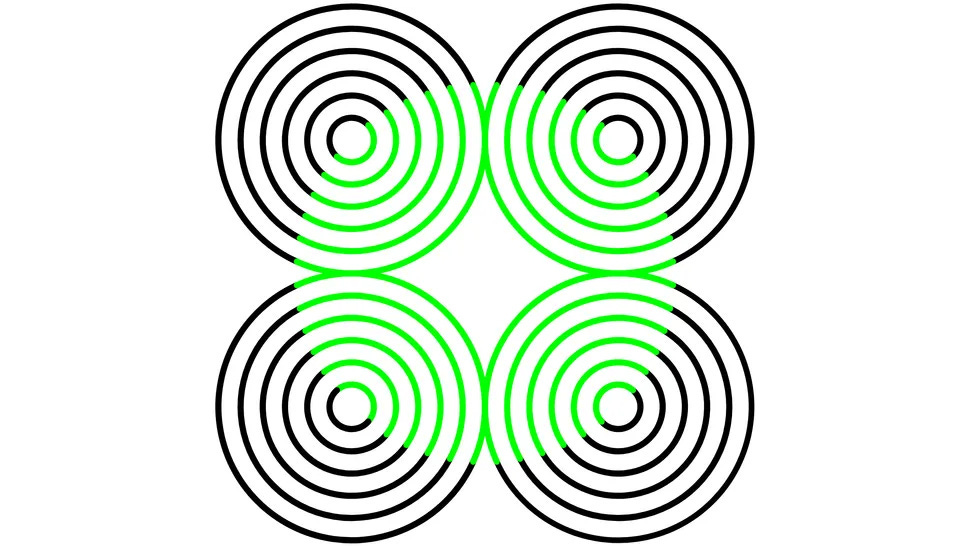Rethinking Consciousness
How AI, Animals, and Neuroscience Challenge Our Ideas About Mind and Intelligence
At its simplest, consciousness is awareness. It is awareness of an object, a state, or oneself. It is the state of being awake and attuned to the world around us. The Cambridge English Dictionary defines it as “the state of being awake, thinking, and knowing what is happening around you.”
Consciousness is the most intimate and least understood aspect of the human mind. We experience it more directly than anything else, yet explaining or defining it remains one of the greatest challenges in philosophy, psychology, and neuroscience. What does it mean to be conscious? How does human consciousness differ from that of other animals? Could machines ever become conscious?
At its most basic, consciousness refers to subjective experience, to what it feels like to be. It encompasses sensations, emotions, perceptions, memories, and the sense of self. Philosopher Thomas Nagel captured its mystery when he asked, “What is it like to be a bat?” If there is something it is like to be a bat from the inside, then the bat is conscious. This inner dimension, or phenomenal experience, is what separates consciousness from simple reactivity or mechanical response.
Scholars often distinguish between two aspects of consciousness. Phenomenal consciousness refers to the raw, qualitative feel of experience: the sting of pain or the taste of chocolate. Access consciousness, on the other hand, refers to mental content that is available for reasoning, reporting, and guiding behavior. Despite extensive research, no theory has yet explained how or why these forms of experience arise from the activity of the brain. This unresolved puzzle is what philosopher David Chalmers famously called "the hard problem of consciousness."
What Sets Human Consciousness Apart
Although many animals display awareness, memory, and problem-solving, human consciousness seems to differ in both depth and complexity. A defining trait is self-awareness, or the ability not just to perceive the world, but to reflect on our own thoughts and experiences. We recognize ourselves in mirrors, recall past events, plan for the future, and think about thinking itself.
Language is a crucial feature. Human consciousness is shaped by our capacity for symbolic communication, which allows us to name experiences, construct stories, and transmit knowledge across generations. Language does not simply express though. It organizes and influences it, shaping how we reason, remember, and interpret the world
We also engage in abstract reasoning, which allows us to imagine hypotheticals, grapple with moral dilemmas, and ponder philosophical questions.
These features give human consciousness a level of introspection, flexibility, and conceptual richness that may be rare or absent in other species.
The Subjective and Constructed Nature of Consciousness
Consciousness is not a clear lens through which we observe reality. It is shaped and colored by our emotions, beliefs, culture, memories, and expectations. Each person sees the world through a unique lens shaped by upbringing, language, personality, and experience.
Neuroscience shows that what we perceive is not just what our senses deliver. Rather, our brains actively interpret sensory information, shaping perception through prior knowledge and assumptions. This is why we can understand speech in noisy environments or recognize faces in a crowd. It also explains why we are vulnerable to optical illusions. Our brains are not passive observers but active interpreters.

As a result, consciousness differs dramatically across individuals and cultures. Two people may witness the same event and walk away with entirely different interpretations. This is not due to a difference in facts but in mental models.
Further reading: Consciousness is primarily a top-down process
Non-Human Animal Minds and Conscious Awareness
In recent years, scientists and philosophers have increasingly recognized that many non-human animals are conscious. Elephants, dolphins, parrots, octopuses, and other creatures exhibit behaviors that suggest awareness, memory, empathy, and communication. Dogs can read human facial expressions. Crows use tools. Great apes mourn their dead.
Some animals have even demonstrated a form of self-awareness. In the mirror test, researchers place a visible mark on an animal’s body and observe whether it uses a mirror to investigate the mark. This behavior is interpreted as an indication that the animal recognizes the reflection as itself. Great apes such as chimpanzees and orangutans, as well as dolphins, elephants, and certain species of birds including magpies, have passed this test. While not a definitive measure of consciousness, mirror self-recognition suggests a level of self-concept and introspection that may be rare in the animal kingdom.
The video below discusses the mirror test with elephants:
The idea that many animals are conscious was formalized in 2012 when leading neuroscientists signed the Cambridge Declaration on Consciousness, affirming that animals possess the neurological substrates required for conscious experience. While we may never fully grasp what it is like to be a raven or a whale, their behaviors suggest that there is something it is like to be them. However, their forms of consciousness may be radically different from ours.
We should be cautious not to view animal consciousness as a lesser version of human awareness. It may not be less than ours, but simply different in kind.
Can AI Become Conscious?
As artificial intelligence becomes increasingly capable, creating art, diagnosing diseases, writing essays, and composing music, it raises the question: could machines become conscious? Or is consciousness inherently biological and emotional, something machines may never possess?
Current AI systems, no matter how advanced, lack an inner life. They can simulate conversation, mimic emotional expression, and produce creative outputs, but they do not feel emotions or have subjective experiences. They can say “I understand,” but they don’t understand in the conscious way humans and other animals do.
Some computer scientists have imagined digital computers someday becoming conscious like humans. However, philosophers, most notably Hubert Dreyfus, have argued that this is impossible and that consciousness requires biological components.
In the video below, Dreyfus, one of the most influential philosophers of the last century, discusses this in detail:
Is Consciousness as Important as Humans Think it is?
Computers and many animals demonstrate that consciousness, at least as humans define it, is not required for extraordinary cognitive feats. In many areas and situations, AI and non-human animals surpass human abilities. This challenges the longstanding assumption that advanced intelligence requires consciousness.
AI and non-human animals expose how human-centric our thinking has been. We often define intelligence, thought, and consciousness in terms of human qualities such as emotion, self-reflection, and subjective experience. However, this is sentimental and a projection of our psychology rather than an accurate model of thinking more broadly.
The Question of Collective Consciousness
Can a group of individuals form a kind of consciousness? While this remains a debated question, there is increasing evidence that complex cognition can emerge from the interactions of many minds. Cognitive scientist Daniel Dennett has proposed that consciousness itself might be a narrative the brain tells about itself. If that is true of individuals, it also applies to groups.
Human societies routinely display intelligence that exceeds what any one member knows. Scientific knowledge is created through collaboration, peer review, and collective correction. No single scientist holds the entire picture, but the community as a whole builds understanding. Similarly, economies and governments function through distributed processes.
There are also many cases in which groups act without any single member intending or even understanding the outcome. A society might drift into war, or stumble into a breakthrough, through countless small decisions and interactions that no one person controls or is aware of. A corporation may develop a technology that’s full implications no employee or executive fully grasps.
Examples of group intelligence are everywhere. Ant colonies build intricate tunnels and allocate tasks efficiently with no central planner. Bee swarms choose optimal hive locations through a decentralized system of signaling and feedback. In flocks of birds and schools of fish, coordination arises from simple rules and local interactions.
In humans, the design of complex technology such as smartphones involves thousands of individuals contributing different pieces of knowledge. No one person understands the full system, yet the system works. Language evolves not by design, but by the interaction of many speakers across generations.
Markets, scientific institutions, and online platforms such as Wikipedia show how collective behavior can yield results greater than any one contributor could achieve. These emergent processes suggest that group minds are not just metaphorical but real.





Noseeums are tiny flies that elude my swat, then make decisions to get into my eye or ear anyway. Their tiny brain not only runs their body, but it also flies as it chooses. Some are speculating that sentience and decisions reside even in our mitochondria. With big animals and small, we're part of an extensive community, not so unique and lonely as we recently assumed.
Whether robots use AI for larger-than-us purposes and claim personhood, we'll see.
(Your great writing concisely sums up volumes.)
ome philosophical perspectives argue that will or self-movement (the ability to act or decide independently) is a distinguishing feature of conscious beings—as opposed to entities that merely react to stimuli without self-direction. In these views, will (or free will) is seen as a property of consciousness, making consciousness relevant by allowing it to have consequences in the world.
Other perspectives, such as Schopenhauer’s, see will as more fundamental than consciousness, with consciousness being a manifestation of will, but not necessarily the other way around1. There are also arguments that entities could have will-like forces (e.g., gravity) without consciousness.